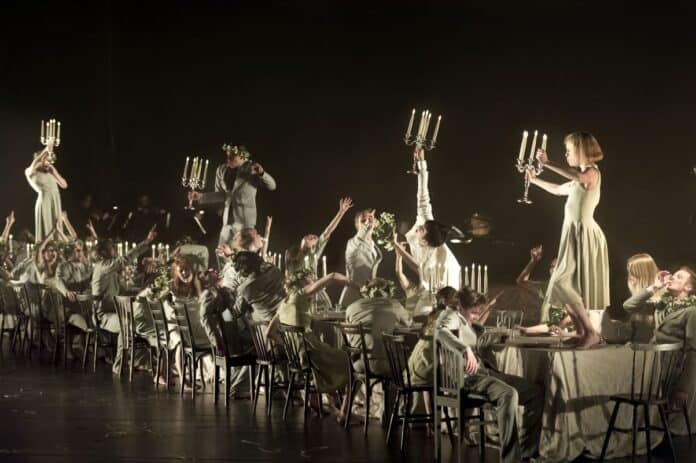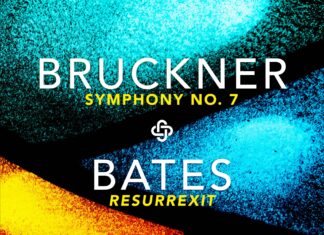Midsummer Night’s Dream (2015) / Alexander Ekman (Choreography & set designs) / Royal Swedish Ballet / Mikael Karlsson (music)
An audacious stage work
True, this has nothing to do with Shakespeare’s play apart from sharing the same name. Not that it matters; this gives the choreographer, Alexander Ekman, the freedom to expand his creativity in different directions. As a result, expect to see an amalgam of classical ballet, contemporary dance, and live singing on stage.
Midsummer Night’s Dream is the story of The Dreamer as performed by Dragoș Mihalcea whom we follow in his experience of the Swedish summer solstice celebration. The curtain rises on the dreamer awakening (or is he not?) The viewer is shortly introduced to an extended stage filled with hay, the dancers literally being part of it: they dance in a field of hay, roll in the hay and toss hay away (there really is lots of hay!). As the dance festivities get progressively wilder under the scorching sun with the usual eating and drinking involved (at one point the ensemble even makes a toast while facing the audience), the second act finds the dreamer experiencing a lucid scenario of surreal horrors and delights. Here the change of scenery is so dramatic – as if walking into a different play. I could go on and talk about the Fellinian atmosphere Ekman conjures, the headless men, the falling fish, etc., but I really feel I should draw attention to what sets this ambitious production apart.
First, it’s the seamless fusion of classical ballet and contemporary choreography. As for the artistic and technical execution, the Royal Swedish Ballet is nearly faultless, accurate without being rigid, employing just the right air of flexibility in its gestures. For me, there is a pitch-perfect part in the second act where three ballerinas dance in pointe shoes with inverted trees hanging upside down in the background; their dancing, classical in essence, with novel undertones has the effect of a slowly-unfolding seductive procession, enhanced by the rhythmic precision of the hypnotic score. It might seem simple compared to the extravagance of the rest of the project, but my point here is that there are parts in Midsummer Night’s Dream that can have an insidious influence on the viewer.
Second, it’s Dragoș Mihalcea himself: forget the pitch-perfect dancing — this is something he doesn’t need to prove. Instead, focus on his expressions, his stage acting and responsiveness. This is an expressive artistic performance of high merit.
Third, there’s the music! And this is two-fold. Yes, we have the great score of veteran Mikael Karlsson and the capable musicians playing literally on stage (in some demanding quartet resonances). They deserved to be mentioned individually: the Dahlkvist String Quartet, percussionist Niklas Brommare and pianist Henrik Måwe. And then there is the s-u-b-l-i-m-e voice (and acting) of singer Anna von Hausswolff, who manages to raise the whole performance to another level.
And even though I’ve never really understood why there must be some sort of fish or sea creature in surreal dreams, the coherence of the story is inspiring. It is my opinion that Midsummer Night’s Dream is slightly more mature when compared to Eskapist, but then again, their premises are so distinct despite sharing similar traits.
As far as contemporary dance productions go, Midsummer Night’s Dream is energetic, inspired, intelligently choreographed: different roles with varying degrees of technical difficulty cleverly distributed among highly skilled dancers. But, as I have pointed out before, it is the balance between contemporary and classical that Ekman strives for and succeeds that is remarkable. An excellent dance project overall.
DVD & Blu-ray available from: BelAir Classiques
Streaming on Marquee TV
Featured image: Hans Nilsson






